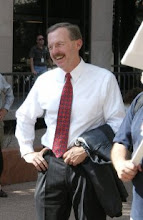 Cambridge Exhibition Drags Spies in from the Cold
Cambridge Exhibition Drags Spies in from the ColdBy Paul Casciato
Fri Jan 22, 2010 11:23am GMT
Reuters
CAMBRIDGE, England (Reuters) - The shadowy world of espionage is dragged into the spotlight at a new exhibition from the British university which gave the world the Cold War double spies Philby, Burgess and Blunt.
Cambridge University Library (www.lib.cam.ac.uk) will use recently declassified documents and "top secret" material from its own archives in its free exhibition "Under Covers: Documenting Spies" to examine the art of espionage from Biblical times to the modern era.
The show draws on personal archives, printed books, official publicity material, popular journals, specialist photographs and maps, mostly from the university library's own collections, to illustrate a few of the ways in which spies have been documented through the centuries.
"Under Covers brings together an astonishing variety of different kinds of material, all throwing light on the business of uncovering and keeping secrets," university librarian Anne Jarvis said of the show which runs until July.
Exhibits range from a 12th-century manuscript recounting the story of King Alfred the Great entering a Danish camp disguised as a harpist to a Soviet-era map of East Anglia.
John Ker's 18th-century "licence to spy," granted by Queen Anne, shows that the underworld of spies was well-established long before James Bond earned his fictional license to kill.
Other highlights include papers used by a parliamentary committee investigating the Atterbury Plot to capture the royal family in the 1720s, a telegram from the British spymaster of the day confirming news of Rasputin's murder, and letters to Prime Minister Stanley Baldwin from Lord Curzon and Winston Churchill, only declassified in 2007.
Incensed at being denied access to intercepted Japanese telegrams already seen by more junior personnel, Churchill, then Chancellor of the Exchequer (finance minister), wrote to Prime Minister Baldwin in February 1925.
"How can I conduct the controversies on which the management of our finances depends, unless at least I have the same knowledge of secret state affairs freely accessible to the officials of the Admiralty? The words "monstrous" and "intolerable" leap readily to mind."
MAPS, PLOTS AND MASQUERADES
A 1985 Soviet map of eastern England shows English towns and cities in Cyrillic script. Maps of this sort were produced by the Soviet military for more than 50 years before, during, and after the Cold War. Classified as secret, these maps were unknown outside the Soviet military machine until the break-up of the USSR -- when they became available on the open market.
The Atterbury Plot papers from the personal archive of Robert Walpole are among the jewels of the exhibition.
The plot aimed to restore the Stuart monarchy in Britain between the Jacobite rebellions of 1715 and 1745. One of these is a deposition of William Squire concerning the arrest of Christopher Layer on September 18, 1722. Layer was later hanged, drawn and quartered at Tyburn for his part in the plot.
Twentieth-century material includes a copy of Compton MacKenzie's book "Greek Memories" that belonged to MI5 Deputy-Director Eric Holt-Wilson. The book resulted in MacKenzie being prosecuted under the Official Secrets Act after he gave details of his time as MI6 station chief in the eastern Mediterranean. Holt-Wilson's copy shows the spy chief's own crossings-out of offending passages.
An Allied escape map of the German-Swiss frontier, a bogus map of the D-Day target area (accurate except for meaningless place names), and detailed dossiers of information gathered by the Nazis for their planned invasion of Britain, form part of the examination of espionage in the Second World War.
The "Cambridge Spies" also feature with, among other items, student record cards for Anthony Blunt, Guy Burgess, Donald Maclean, Kim Philby and John Cairncross, and a 1933 copy of The Granta magazine including a mock interview with Donald Maclean which reveals his ability to take on different personae.
"A library might seem a strange place for an exhibition of secret service, given its association with guns, fast cars, and high-tech gadgetry," said intelligence historian Nicholas Hiley, who has lent rare material from his collections for the show.
"But the one thing that both espionage and counter-espionage have depended upon for centuries is paper -- for agent reports, ciphers and codes; for maps and plans; for reports on suspects and advice to government; and for the hundreds of thousands of files on which secret service depends."




No comments:
Post a Comment